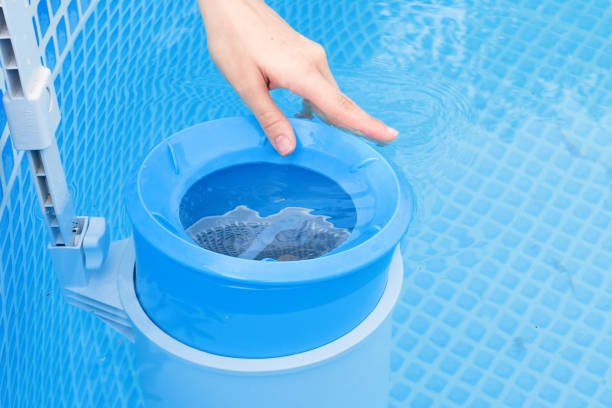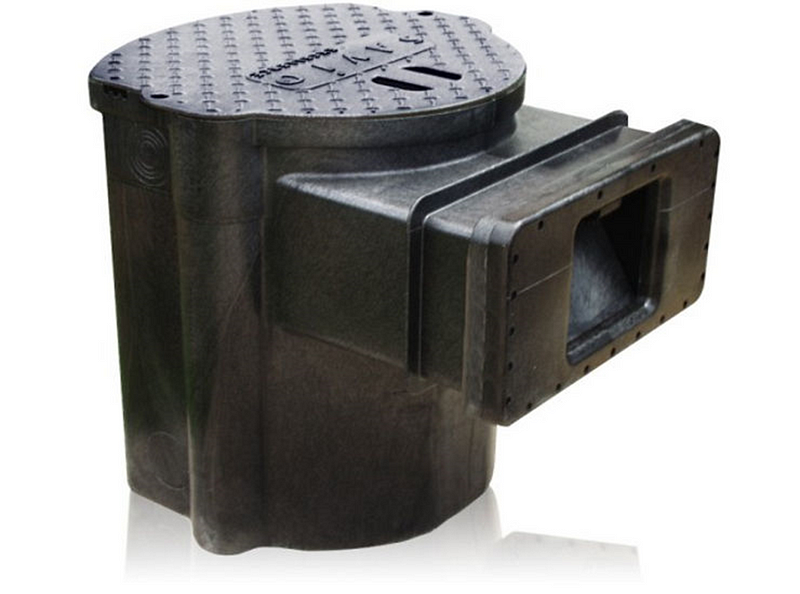
When it comes to removing dust, dirt and debris from your pond surface a skimmer is the best solution. Lessening the requirement for supplementary plumbing and equipment is another benefit. Before installing your Pond Skimmer, check to ensure that its built-in overflow opening is positioned below where the natural water line of your pond should be when filled. This will prevent small fluctuations in your water level from causing issues.
Floating weirs
▸The Role of the Float Weir in Pond Skimmers: The float weir is the heart of any good pond skimmer. It helps to distribute the flow of water into the skimmer basket evenly, which reduces the risk of clogs. The skimmer’s efficiency and user-friendliness are both enhanced by this feature.
▸How Floating Weirs Work: This floating weir works in the same way as a waterfall that flows into your pond. As water passes over the weir, it moves up or down to compensate for varying water levels. It can also be shaped to provide more or less flow through the weir.
▸Customizing Skimmer Functionality: Most skimmer manufacturers make the weir adjustable. You can adjust the weir by inserting the door’s tabs into holes located on the walls of the skimmer. You can also weight the weir down by placing a rock on top of it.
▸The Importance of Skimmers in Maintaining a Clean Pond: In order to keep your pond clean and free of difficulties caused by huge debris, skimmers are a must-have. A layer of dissolved organic compounds can also develop on the surface of the pond, but they can assist minimize it.
▸Maximizing Skimmer Performance with Weirs: The weir in a skimmer is designed to grab the particles of debris that are floating on the water’s surface and pull them into the basket. This is much more efficient than pushing the debris through a filter. The weir will also prevent the skimmer from becoming clogged by large debris and will allow it to perform at its best.
Bottom drains
▸Enhancing Water Quality with Skimmers: A bottom drain is a must for any fish pond. The skimmer is able to remove more dirt and the water remains clean because of it. It does double duty by increasing oxygen levels and aerating the pond. Ideally, the skimmer and bottom drain should be connected. They should be shaped in a way that creates an area of low current around the drain to allow the debris to flow to it.
▸Skimmers and Bottom Drains in Action: Skimmers are especially important in ponds with fish (koi). This is because fish waste does not float and can sink to the bottom of the pond where it creates ammonia. This ammonia is removed from the water by the skimmer and the bottom drain, which helps to maintain clean water for the fish.
▸Optimizing Bottom Drain Functionality
In rock and gravel ponds the performance of a bottom drain can be enhanced by using a double grid system. This would be a grid with two alternating holes spaced apart about 1 foot apart. The pond would flow into one grid and return to the pond through the other. This is known as a Tangential Pond Return or TPR. It does not require any silicone or cutting of the pond liner and installs right on top of it. It also comes with a debris basket, filter pad and a pump that is housed inside the skimmer.

Filters
▸Exploring Different Types of Pond Filters: There are many types of filters that can be purchased. Some are multifunctional, like a combo filter that houses mechanical and biological filtration as well as a UV clarifier to combat discolored water. These are often more expensive but tend to be more durable, efficient and long-lasting than cheaper units.
▸Water Circulation in Mechanical Filters: Mechanical filters trap large debris in some form of medium, such as a rigid basket or filter pad. This enables the pump to continuously move water through it. As the water sifts through this medium, leaves and other debris get trapped. Water circulation then guides the larger pieces into the drain.
▸Biological Filters in Action: Biological filters use bacteria colonies to break down organic pollutants in water, which reduces the amount of waste that is left behind on the bottom of the pond or suspended in the air. These bacteria are colonized by rocks, gravel or even plants.
▸Chemical Filtration in Ponds: Chemical filtration is not typically used in ponds, but it is sometimes employed to manage ammonia levels and to remove any traces of medication or treatment chemicals that may have been administered. It uses specialized media, such as carbon and resins, in either loose, bagged or pad forms. These are typically inserted into the media chamber of the pond filter.
Maintenance
▸Designs for Various Debris Types: Skimmers can collect leaves, twigs, and other debris that would otherwise wash away into the water. However, you must regularly empty the skimmer basket and dump it to prevent it from clogging and interfering with your pond pump. Some have longer teeth that can uproot deeper plants, while others are designed to float and catch surface weeds and debris.
▸Maintaining the Skimmer’s Functionality: When a pond skimmer is closed for winter, it is important to remove the ice that forms on the intake. This will prevent the skimmer from drawing water into the pump, resulting in less oxygenation and algae growth. The skimmer should also be cleaned in the spring.
▸Positioning the Skimmer in the Pond: The pond skimmer should be located in the middle of the pond, opposite the waterfall and near an electrical outlet. It should be positioned low enough to allow for easy maintenance. During installation, it is important to dig a hole that is large enough for the body of the skimmer and then add backfill.

Why Choose Aqua Bead!
As far as pond skimmer options go, Aqua Bead is head and shoulders above the rest. Leaves, twigs, and other floating debris can be efficiently captured and removed from the water’s surface by use of the innovative Aqua Bead filtration system. It will endure a long time and not get worn out because of its sturdy build and premium materials. Aqua Bead skimmers are great for ponds of all sizes, from little garden ponds to massive water features, because they keep the water very clear and contribute to a balanced ecology.

